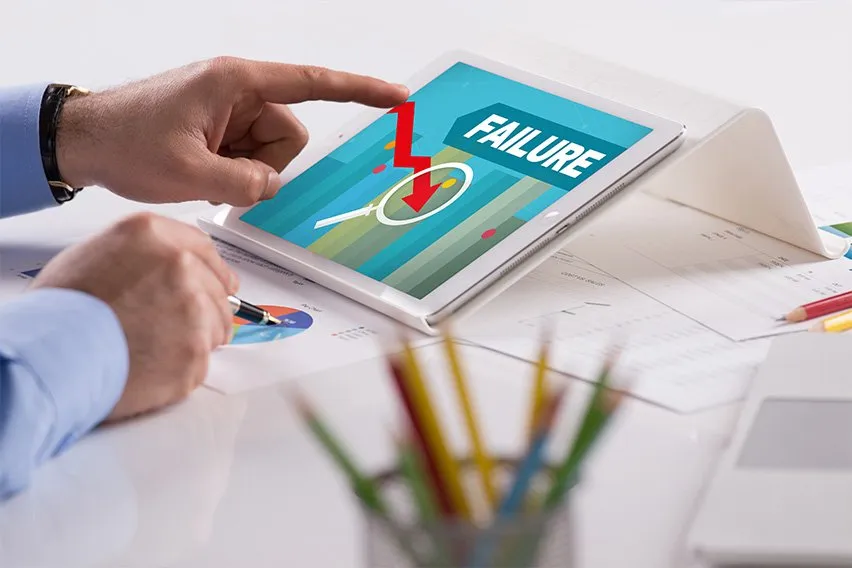How to Increase Revenue: 13 Strategies

Increasing revenue is key to growing your profits, making it essential to find the right strategies for your business. Clear goals can help you determine which strategies are most beneficial so you can regularly review your revenue growth, and focus on methods that generate the best returns.
Revenue strategies cover many aspects of business, from expanding your customer base to diversifying your offerings and entering new markets. We’ll explore a variety of strategies to increase sales revenue so you can find the right combination to grow your business.
Key Takeaways
- Setting specific and measurable goals helps you determine the right strategies for increasing revenue.
- It’s important to focus on repeat customers as well as seeking new customers and markets.
- Researching your customers, market, and competitors can help you set the right prices.
- Regularly review your marketing strategies to see what’s working and where you can improve.
Table of Contents
- Determine Your Goals
- Grow Your Customer Base
- Target Repeat Customers
- Pricing Strategy
- Rebate Incentives
- Enhance Customer Experience
- Expand Product/Service Offerings
- Create Bundles
- Identify Opportunities for Upselling
- Enter New Markets
- Marketing and Sales Strategies
- Review Your Online Presence
- Collaborative Partnerships
- Enhance Your Business Revenue with FreshBooks
Every business is unique, so it’s important to find strategies for generating revenue that align with your company’s goals and resources. Diversifying and expanding your revenue strategies can help your small business grow significantly over time.
1. Determine Your Goals
Setting clear and measurable goals is key to creating strong business strategies. When you know what you want to achieve and how you can measure success, you can determine which strategies will be most effective in meeting those goals.
Set a combination of short, medium, and long-term goals—the more specific, the better. For example, a short-term goal could be to generate a specific amount of revenue in the next month. A medium-term goal could be reaching a certain customer base in your first year, and a long-term goal could be generating a certain amount of profit in your first 5 years.
Measurable goals also make it easier to track your success so you can adjust your strategies along the way to increase revenue further.

2. Grow Your Customer Base
Expanding your customer base is key to increasing revenue. Start by understanding your target customers so your sales team can determine the most effective ways to reach those people.
One method for growing your customer base is to expand your physical reach by opening up a new location or offering service in a new area. Another top customer acquisition strategy is leveraging online reach and advertising to find your target customers. This includes everything from creating engaging social media content to targeted ad campaigns and online promotions for new customers.
3. Target Repeat Customers
Growing your business’s revenue requires a combination of reaching new customers and retaining your current customers. Great customer service is key to building long-lasting customer relationships and encouraging repeat business.
It’s also beneficial to show repeat customers that you value their business. Loyalty programs and purchasing incentives encourage brand loyalty and motivate customers to stay with your company. Personalized marketing campaigns can also demonstrate that you understand customer needs and want to provide products that suit their interests.
Connecting with your existing customers can also be an excellent way to acquire new customers to boost business growth. Since people are inclined to connect with others like them, giving existing customers a strong referral incentive can be a big win for your business.
4. Pricing Strategy
Optimizing pricing strategies is key to revenue generation—price too high and you risk losing customers; price too low and you won’t generate profit. Deciding on the best pricing strategies depends on the market, the products you offer, and your customer base.
In a competitive market where you offer a similar product to your competitors, you may choose to price lower to attract a greater market share. If you offer a unique product that your customers value, you may opt to price higher and rely on brand differentiation and customer loyalty.
Promotions and discounts can help split the difference by offering competitive prices to attract new customers without setting long-term pricing expectations.
5. Rebate Incentives
Discounts and rebates can be an effective way to incentivize purchasing and attract new customers. Discounts offer a lower price at the time of purchase, while rebates are a delayed-discount system where customers receive a percentage of the cost back after purchase. Rebates typically have a low redemption rate, meaning that many items are still sold at the full price.
Discounts and rebates can include seasonal promotions, special events, or volume-based promotions such as bulk discounts or buy one, get one half off. Events and promotions can build customer enthusiasm by allowing them to try new products, while volume discounts are especially effective in encouraging greater overall purchasing.
6. Enhance Customer Experience
Offering a seamless customer experience is essential for ensuring that customers complete their purchases and want to come back. A simple buying process is a great place to start. Ensure that there are minimal barriers to purchasing—consider offering both profile and guest checkouts and multiple payment methods so nothing gets in the way of completing a purchase.
Delivering exceptional customer service is key to maintaining satisfaction and building repeat customers. It’s also helpful to gather feedback so you can find out what customers love and what can be improved.
7. Expand Product/Service Offerings
Offering an expanded product range can be an effective way to differentiate yourself from your competitors and build brand loyalty. Begin by conducting market and customer research—assess whether your competitors offer other products and services, or gather customer feedback, to see what products your customers are looking for.
Promotions for new products and services can help you refine your offerings. Once you’ve diversified your lineup, consider offering trials or discounts to enable your customers to try your new products.
8. Create Bundles
Bundles are a great way to increase sales volume and boost average transaction value. There are 2 primary ways to create bundles: volume-based and diversified bundles.
Volume-based bundles offer a discounted price for larger quantities of a product or service. If your business focuses on a more narrow product range, this can be an effective method for encouraging customers to buy in bulk.
Diversified bundles pair complementary products. This is a good way to encourage customers to try new products or services.
9. Identify Opportunities for Upselling
Upselling involves recommending higher-priced products and services when customers are making a transaction. It can be useful for converting potential and existing customers into higher-revenue customers.
Active upselling requires training staff to identify upselling opportunities and recommend higher-value options. It’s important to ensure that these options align with the customer’s needs so that they feel the upsell confers benefit.
Passive upselling can include things like informational displays and pop-ups that emphasize the value of more expensive options so that customers can explore these for themselves. This may be less effective, but can also remove the feeling of pressure for customers. Many businesses choose to mix active and passive upselling.
10. Enter New Markets
Alongside understanding your current customers, it can be beneficial to find new markets to increase your revenue streams. This may involve finding new target customers or expanding to new geographical regions.
Before you expand, be sure to conduct thorough research on potential new markets. You can research market trends, different types of customers, and their current purchasing habits to determine how your product or service could fulfill a need. Surveys and product testing can be helpful in your research. You can also explore competitors in new regions and assess the costs of expanding into a new area to determine whether it’s likely to yield significant profit.
11. Marketing and Sales Strategies
Robust marketing and sales strategies help increase sales volume, attract new customers, and encourage returning customers. They’re also key for introducing new products and services and making sure customers are aware of loyalty programs and discounts.
A sales funnel is the system of steps through which customers travel in the sales journey. This typically includes contact, engagement, decision, and action. Sales funnel optimization helps you identify weak points in your funnel so you can focus on improving those to boost conversion and eventual sales.
There are a variety of marketing strategies and channels you can use to get your product or service noticed. This includes:
- Website
- Pay-per-click advertising
- Social media
- Email marketing
- Public relations
- Content marketing
- Traditional marketing through flyers and billboards
- Digital Marketing
It can also be useful to review and analyze marketing data from previous years to see what strategies and channels work best for you.
12. Review Your Online Presence
It’s vital to review your online presence periodically. Review your websites and see how they are being viewed on different devices. You can use analytics to review your website traffic and develop plans to improve the customer’s online experience. Use a combination of organic and paid search engine marketing efforts to reach your customers.
It’s also important to review your sales and product information to ensure that everything is up-to-date and accurate. If you’ve changed any prices or modified your product line, make sure that those changes are reflected across all your online platforms.
13. Collaborative Partnerships
Increasing revenue doesn’t have to be a solo strategy—working with other businesses offers an effective channel for driving revenue growth by connecting with new customers and new markets. Collaborative partnerships are mutually beneficial systems often established between businesses that offer complementary products or services.
For example, a business that sells wedding invitations might partner with a florist so that customers seeking wedding products can benefit from both companies. Partnerships can include basic advertising and information as well as partner discounts and rebates.

Enhance Your Business Revenue with FreshBooks
Increasing revenue is a key component of boosting profits and growing your small business. From expanding into new markets to streamlining your sales channel, exploring different strategies to generate revenue helps you find the right fit for your business needs.
FreshBooks invoicing software makes it easy to send invoices and collect payments, improving customer satisfaction and saving you time and money. Reduce unpaid invoices, encourage timely payments, and improve cash flow with comprehensive invoicing and payment features. Try FreshBooks free to start increasing your revenue today.
Reviewed by
Michelle Payne has 15 years of experience as a Certified Public Accountant with a strong background in audit, tax, and consulting services. Michelle earned a Bachelor’s of Science and Accounting from Minnesota State University and has provided accounting support across a variety of industries, including retail, manufacturing, higher education, and professional services. She has more than five years of experience working with non-profit organizations in a finance capacity. Keep up with Michelle’s CPA career — and ultramarathoning endeavors — on LinkedIn.
RELATED ARTICLES


 Pros and Cons of Starting Your Own Law Firm
Pros and Cons of Starting Your Own Law Firm Smart Tips for Owning Multiple Businesses and Making Them Profitable
Smart Tips for Owning Multiple Businesses and Making Them Profitable 8 Ways to Get Money to Start a Small Business
8 Ways to Get Money to Start a Small Business A How-To Guide to Paying Yourself as a Small Business Owner
A How-To Guide to Paying Yourself as a Small Business Owner How Long Does It Take a Business to be Profitable? A Guide
How Long Does It Take a Business to be Profitable? A Guide What Percentage of Businesses Fail in the First Year? (Plus Top Causes of Business Failure)
What Percentage of Businesses Fail in the First Year? (Plus Top Causes of Business Failure)